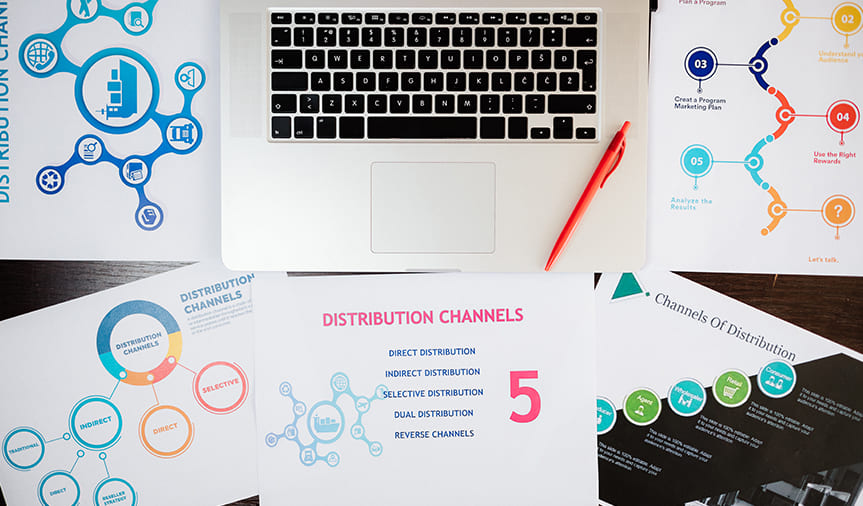SEO-recommended practices develop as search engine algorithms improve and consumer expectations shift. An SEO consultant recommends the following optimal SEO techniques for 2024 and beyond.
Analysis Of Keywords

Keyword research is an important part of SEO since it involves identifying and analyzing the keywords and phrases that potential consumers use while looking for information, goods, or services linked to your site. Here’s more information:
- Recognize your target.
- Create an initial keyword list.
- Utilize tools for keyword research.
- Analyze competitors’ keywords.
- Assess keyword relevancy.
- Select keywords that fit with your aims and content.
- Use long-tail keywords.
- Evaluate keyword difficulty.
- Classify keywords into theme groupings.
- Content arrangement.
- Track and monitor.
As search patterns evolve, keyword research never stops. As an SEO consultant, you must continually update your keyword list to reflect the changing search landscape and ensure your content is seen by the correct audience.
Optimize Content

Optimizing your content is a critical SEO step that includes enhancing text and pictures for search engine visibility and usability. What is content optimization?
- Integrating keywords.
- Use clear headers, bullet points, lists, and subheadings for easy scanning.
- User-friendly design.
- Different and inventive.
- Improve meta descriptions and page titles.
- Internal linking.
- Use credible sources where necessary.
How can photos be optimized?
- Image file names, including pertinent keywords.
- Use alt text.
- Optimize size and quality for quicker loading.
- Responsive Design/li>
- Generate and submit image sitemaps.
- Use the appropriate format (e.g., JPEG for pictures, PNG for transparency).
- Consider captioning.
- Use lazy loading to improve website load times.
Higher search rankings, user engagement, and conversions may be achieved by optimizing text and imagery for an efficient SEO strategy and user experience.
Create High-Quality Backlinks

Acquiring connections from reliable websites to improve the authority and ranks of your website is a crucial SEO component known as “building high-quality backlinks.” To find high-quality backlinks, follow these steps:
- Prioritize authoritative backlinks.
- Find backlinks from industry-related websites.
- Creates natural links.
- Guest posting.
- Content about resources and skyscrapers.
- Broken link building.
- Maximize brand mentions that are not related.
- Interact with influencers and share material on social media.
- Publish noteworthy press releases.
- Answer pertinent questions.
- Analysis of rivals.
- Avoid using sponsored or spammy links.
- Use different anchor texts.
- Continually check backlinks.
- Conduct basic keyword research to assess the competition.
Building high-quality backlinks requires patience, tenacity, and dedication to improve website authority and rankings.
Enhance User Experience & Site Speed

As it directly affects user interactions and search rankings, optimizing a website’s speed and user experience is crucial for an SEO consultant.
Website Speed:
- • Make sure it loads quickly.
- • Compress images.
- • Use CDNs to improve load times.
- • Enable browser caching.
- • Reduce HTTP requests.
- • Optimizing for mobile.
- • Make server settings optimal.
User Experience:
- Use responsive design.
- Easy navigation.
- Use intriguing CTAs.
- Readable typography.
- Enable website accessibility.
- Swift Interaction.
- Limited pop-ups and advertisements.
- Quality content.
- Media and image optimization.
- Ensure brand consistency.
- Comments and assistance.
Improving site performance and usability boosts SEO, user engagement, and conversions.
Use Social Media

An SEO consultant and digital marketer must also use social media to promote and engage their clients.
- Optimize profiles.
- Market website content
- Make shareable images.
- Engage your followers.
- Use polls to get feedback.
- Retain a posting schedule.
- Employ pertinent hashtags.
- Promote user involvement.
- Giveaways and competitions.
- Promote content with social signals.
- Consider paid advertisements.
- Analyze performance.
- Collaborate to expand your reach.
- Optimize local pages.
- Reputation management.
Efficient social media utilization improves online exposure and user engagement, which helps SEO.
Use Schema Markup

Schema Markup is a sophisticated SEO method used by an SEO consultant that entails adding structured data to your website’s HTML to offer search engines precise content information. This helps search engines grasp the context of your material, resulting in richer snippets and better search results. Here’s a thorough guide to using Schema Markup:
What Exactly Is Schema Markup? It’s a defined set of tags (microdata) that you may include on your web pages to help search engines interpret your content.
Schema Markup Benefits: It include the ability to generate rich snippets, enrich search results with additional information such as star ratings, event dates, and recipe preparation times, and increase click-through rates.
Improved SERP Features: It increases exposure and authority by making your material appear in different SERP elements like featured snippets, carousels, and knowledge graph panels.
Schema Markup Types: The content categories covered by Schema Markup are many and include events, items, reviews, articles, corporations, organizations, and more. Select the schema type that best fits your content.
Schema Markup Implementation: Use HTML tags such as “itemscope,” “itemtype,” and “itemprop” to specify the type of content, attributes, and values in the markup. For an easier approach, Google advises utilizing JSON-LD.
Typical Schemas: Add product data, ingredients for recipes, event information, local business details, user reviews, and so on.
Testing And Approval: To verify that your schema markup is correct, use Google’s Structured Data Testing Tool.
Google Search Console: Use Google Search Console to track how Google interprets and presents your structured data.
External Tools And Plugins: If you use WordPress, consider using plugins like Yoast SEO and Schema Pro to make Schema Markup deployment easier.
Because schema markup gives search engines useful context, using it improves your website’s exposure in search results. Users will find your website more appealing, and click-through rates may rise as a result of rich snippets and improved SERP features.
Prioritize Local SEO

The goal of concentrating on local SEO is to increase a company’s or website’s exposure in local search results. To draw in local customers, firms must do this. An SEO consultant provides a thorough tutorial on how to properly focus on local SEO.
Register To Boost Google My Business (GMB): Ensure that your GMB listing has accurate information, such as your company name, address, phone number, website URL, and business categories. Add top-notch photos and videos to your GMB listing.
Regional Keyword Analysis: Discover regional keywords that prospective buyers may use to discover your products or services, such as city- or region-specific terms.
On-Page SEO: Use regional keywords in your website’s content, meta titles, and meta descriptions. Create landing pages for each of your company’s locations.
Consistency Of NAP: To increase trust and ranking, keep your NAP information consistent throughout your website, GMB, local directories, and social media accounts.
Client Testimonials: Urge pleased clients to provide evaluations on your GMB listing. Good reviews may increase trust and improve local search results.
Building Local Links: To improve local SEO, list in regional directories and acquire backlinks from local businesses, news websites, and adjacent companies.
On-Page Signals: Make distinct location pages with original content for each of the places your firm services, if it does.
Mobile Optimization: Make your website mobile-friendly because a lot of local searches are done on cell phones. Assure speed and rapid loading.
Structured Data Locally: Use Schema Markup to include local data, such as company addresses, hours of operation, and client testimonials.
Social Networks And Regional: Involve your native audience via social media. To grow your local following, provide news, events, and promotions.
Online Marketing: Run local online marketing campaigns on sites such as Google Ads and social media to reach out to local people.
Geotargeted Content: Create material on local themes, events, or issues to engage with the community and improve local rankings.
Monitor And Assess: Employ web analytics tools to measure local SEO metrics such as website traffic, conversions, and keyword rankings.
Tools For Local SEO: Use local SEO tools like Moz Local, BrightLocal, and Yext to handle and analyze directory listings and reviews.
To draw in local clients, local SEO is crucial. Use these tactics to boost your online exposure in local search results, enhance local traffic, and attract foot traffic to your actual store or service area. It’s a great method to engage with your local community and grow your client list.
Evaluate Your Competitors

Monitoring your competition is critical to a good SEO strategy. It entails constantly monitoring and assessing your rivals’ online actions, performance, and methods. This is a comprehensive guide on how to keep an eye on your rivals.
Determine Your Rivals: Begin by finding your top online rivals who cater to the same audience and keywords as you.
Analyzing Competitor Websites: Look at the layout, usability, speed, mobile friendliness, and navigation of the websites of your rivals.
Content Evaluation: Analyze your rivals’ material for subjects, depth, and audience engagement.
Analyzing Keywords: Use tools such as Ahrefs or SEMrush to find the keywords that your rivals are ranking for.
Analyzing Link Profiles: Examine the backlink profiles of your rivals to find linking tactics and websites.
Social Media Awareness: Examine your rivals’ social media activities, including posting frequency, interaction, and content strategy.
Content Planning: Examine your rivals’ content production methods and styles, formats, and frequency of release.
SEO Strategies: Examine your rivals’ use of keywords, meta tags, backlink development, and domain authority, among other on- and off-page SEO strategies.
Paid Advertisement: Analyze the ad budget, landing sites, and text of your rivals’ paid advertising efforts.
Email Marketing: Check out the content and responses of your rivals’ email marketing efforts by subscribing to their email lists.
Monitoring Tools: To simplify and expedite competition monitoring, make use of competitive analysis tools and software such as SimilarWeb, Ahrefs, and SEMrush.
Constant Updates: Competitive analysis is a continual activity. Keep an eye on your rivals’ strategy and industry developments.
Ethical Aspects: Always follow ethical procedures and admire rivals’ ideas and solitude, while eliminating duplication and improper evaluation.
By carefully watching your competition, you may gather useful insights, keep up with industry trends, and find areas for improvement in your SEO and digital marketing activities. This data may help you improve your plans, define your brand, and achieve a competitive advantage in the online world.
Examine And Boost Your SEO Approach

An SEO consultant will continuously analyze and tweak your SEO strategy to determine its efficacy and improve your website’s search engine rankings and online visibility. Here’s a complete guide for analyzing and improving your SEO strategy:
Deep Website Audit: To find and fix problems with indexing, broken links, duplicate content, page performance, and mobile friendliness, do a comprehensive technical audit.
Analyzing Keywords: Review keyword research to find essential, valuable terms that correspond to user context and existing searching patterns.
Content Planning: Examine the content’s quality and relevancy and add new, useful material to fill in any gaps.
On-Page SEO: Enhance content quality, headers, and meta tags for target keywords while creating on-page items.
User Experience: Make sure your website loads quickly, is mobile-friendly, and has easy-to-use navigation.
Link Building: Evaluate your backlink profile, avoid poisonous connections, and look for high-quality backlinks from credible sources.
Social Signals: Encourage social media involvement, as it has an indirect influence on SEO results.
Local SEO: Employ local SEO strategies, such as GMB optimization and local citations, if applicable to your firm.
Technical SEO: For higher ranking chances, use secure HTTPS and Schema Markup.
Track Efficiency: Regularly analyze SEO success with web analytics, which tracks indicators like organic traffic, keyword ranks, and conversion rates.
Algorithm Update Adaptation: Keep track of search engine algorithm upgrades and alter your approach to reflect new ranking factors.
A/B Testing: To get the most user engagement out of components like page titles, meta descriptions, and calls to action, do A/B tests.
Content Updates: Modify and renew existing information regularly to keep it relevant and effective.
Keep Informed: Follow the newest SEO trends and standards on industry blogs, forums, and reliable sources.
Regular analysis, adjustments to algorithm updates, the user experience, and high-quality content are all necessary for improving your SEO strategy. By constantly fine-tuning your approach, you may improve your website’s exposure and ranking in search results.
Make An SEO-Friendly Design

Enhancing the user experience through SEO requires a user-friendly design. Discover how to create a website that draws users in and improves search engine rankings with this article.
- Verify that your website adjusts to different screen widths.
- Enhance your website to load quickly.
- Create easy-to-use navigation menus.
- Add accessibility options.
- Reduce obtrusive pop-ups.
- Retain uniform color schemes and branding.
- Provide timely, high-quality information.
- Invest in an SSL certificate to safeguard your website.
- Design unique 404 error pages.
A user-friendly layout boosts SEO, visitor satisfaction, and retention. It boosts search engine ranks and user interaction. Use these techniques to create a website that efficiently attracts search engines and visitors.
Using Sitemaps And Navigation For SEO

Optimizing a website’s navigation and sitemaps is essential for improving search engine optimization (SEO) and the user experience. This post provides essential tactics for improving navigation and successfully using sitemaps.
Easily Navigable Websites:
Use simple menus for quick website navigation. The top header, sidebar, or footer are typical places for menus. Create an ordered menu for rational content categorization, using drop-down menus as needed. Menu item names should be informative and simple to show content relevancy. Include internal links in your content to direct people to relevant sites, increasing SEO and user engagement.
HTML Sitemaps:
Create an HTML sitemap that includes all web pages and gives readers a clear, text-based picture of your site’s layout. Provide an accessible link in the footer.
XML Sitemaps:
Create XML sitemaps just for search engines. Structured listings of pages, photos, and resources help search engines index your website. For optimal updates, automate the creation of XML sitemaps.
Image Sitemaps:
If your website has a lot of photos, try constructing image sitemaps to optimize image search results.
Video Sitemaps:
To improve video content exposure in search results, create video sitemaps.
Enhancing your website’s menus and sitemaps creates a more user-friendly experience and allows search engines to index and comprehend your site’s framework, thus enhancing SEO. Employing these principles results in a better user-friendly and search engine-friendly website.
Comprehending Voice Search

Voice search technology allows people to engage with digital gadgets using speech. Its expanding popularity, fueled by virtual assistants such as Siri and Alexa, is altering how consumers search online, affecting SEO and content strategy. Here’s a detailed explanation of voice search and what it means:
How Voice Search Operates:
Voice search uses powerful voice recognition algorithms to transform spoken words into text. Natural language processing (NLP) examines the context and purpose of inquiries. Voice search systems interpret inquiries and get relevant data.
SEO Relevance:
Optimization for long-tail keywords and spoken phrases is crucial since voice searches sometimes contain lengthy, conversational questions. Featured snippets and “position zero” results are crucial for voice search since they give short, succinct responses to user requests.
Local SEO is critical for SEO consultants since voice searches are frequently location-based.
Mobile And Smart Speakers:
Voice search is popular on smartphones, so make sure your website is mobile-friendly. Develop speech applications or skills for Amazon Echo and Google Home to optimize for smart speakers.
Schema Markup And Organized Data:
Employ organized data and schema markup to improve your content’s visibility in voice search results.
Optimizing Content:
Create short, useful content that addresses typical voice search questions. Create FAQ pages to answer these questions directly.
User Objective:
Evaluate the customer’s purpose underlying voice search inquiries and provide context-appropriate data.
Synthetic Language and Situation:
Prepare information with context to fit into larger talks and improve conversational language.
Analysis And Evaluation:
Monitor and analyze voice search data to improve content and SEO efforts.
Mobile Optimization:
Ensure that the material on your website is optimized for mobile.
Speed And Efficiency:
Boost website performance to give voice search users prompt responses.
User Experience:
It’s critical to modify SEO and content strategies to account for voice search, as it becomes a crucial part of online communication. You can improve exposure and satisfy voice search users by offering user-centric, educational, and context-rich information.
Deep Learning & AI In SEO

According to an SEO consultant, AI and Machine Learning (ML) are disruptive technologies that are affecting a variety of fields, including SEO. They enable better data analysis, improved search rankings, and an improved user experience for advertisers, search engines, and website owners.
AI In SEO:
More pertinent searches are produced by search engines thanks to AI-driven algorithms like RankBrain. AI determines user intent by looking at demographics and search context. Providing product descriptions, blog pieces, and social media updates, AI technologies help in content creation. AI-powered chatbots and voice assistants deliver quick replies, increasing engagement and customer service. The predictive analysis predicts user behavior, allowing content suggestions.
ML In SEO:
To make data-driven SEO choices, ML algorithms evaluate large amounts of data and find behaviors and patterns. ML technologies aid in keyword research by examining keyword popularity, competitiveness, and user intent. ML algorithms provide accurate keyword ranking tracking.
ML aids in content analysis for potential optimization. ML can analyze images and videos to enhance accessibility and SEO.
Perks Of AI And ML In SEO:
With SEO duties, automation reduces time and effort. Customization boosts customer engagement and conversions. Data analysis can help you make more educated decisions.
Real-time data and analytics allow rapid adjustments to SEO trends and user behavior. By providing more relevant content, AI and ML improve the user experience.
Obstacles:
Employing AI and ML in SEO can be difficult, requiring particular skills and resources. GDPR compliance is crucial since handling user data for customization gives rise to privacy concerns. Advanced AI and machine learning tools and services can be costly, restricting access for small firms.
To be effective, AI and ML models must be trained and refined constantly. Strong SEO tools like AI and ML can completely change content distribution and optimization tactics. To benefit from these technologies, SEO consultants and website owners should remain up-to-date on advances and consider using them to boost search rankings and user engagement.
To Sum Up:
As you have previously read all of the greatest SEO strategies, these vital facts are directly from ITG’s skilled SEO consultant, who is honing his talents for the customers. We hope that these methods will help you conduct the best SEO for your organization and clients.
Farah Jawed Khan
Content Writer | Digital Marketer
I have been doing content writing since 2019. I have covered a vast area of services and products like IT, Fashion, Law, Business Coaching, Automobile, and the list goes on.




